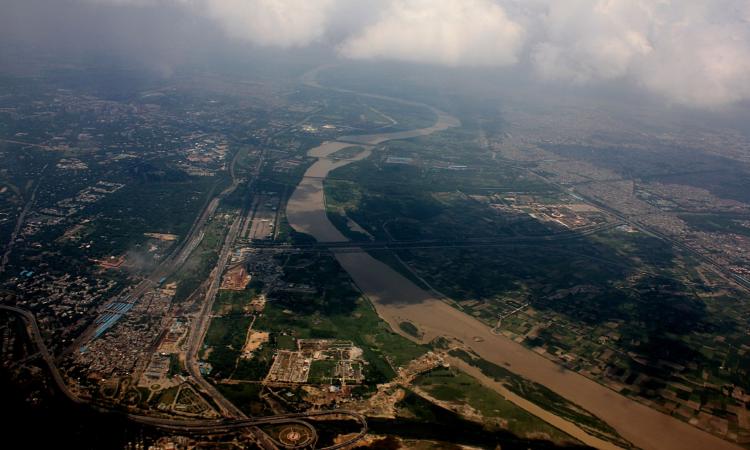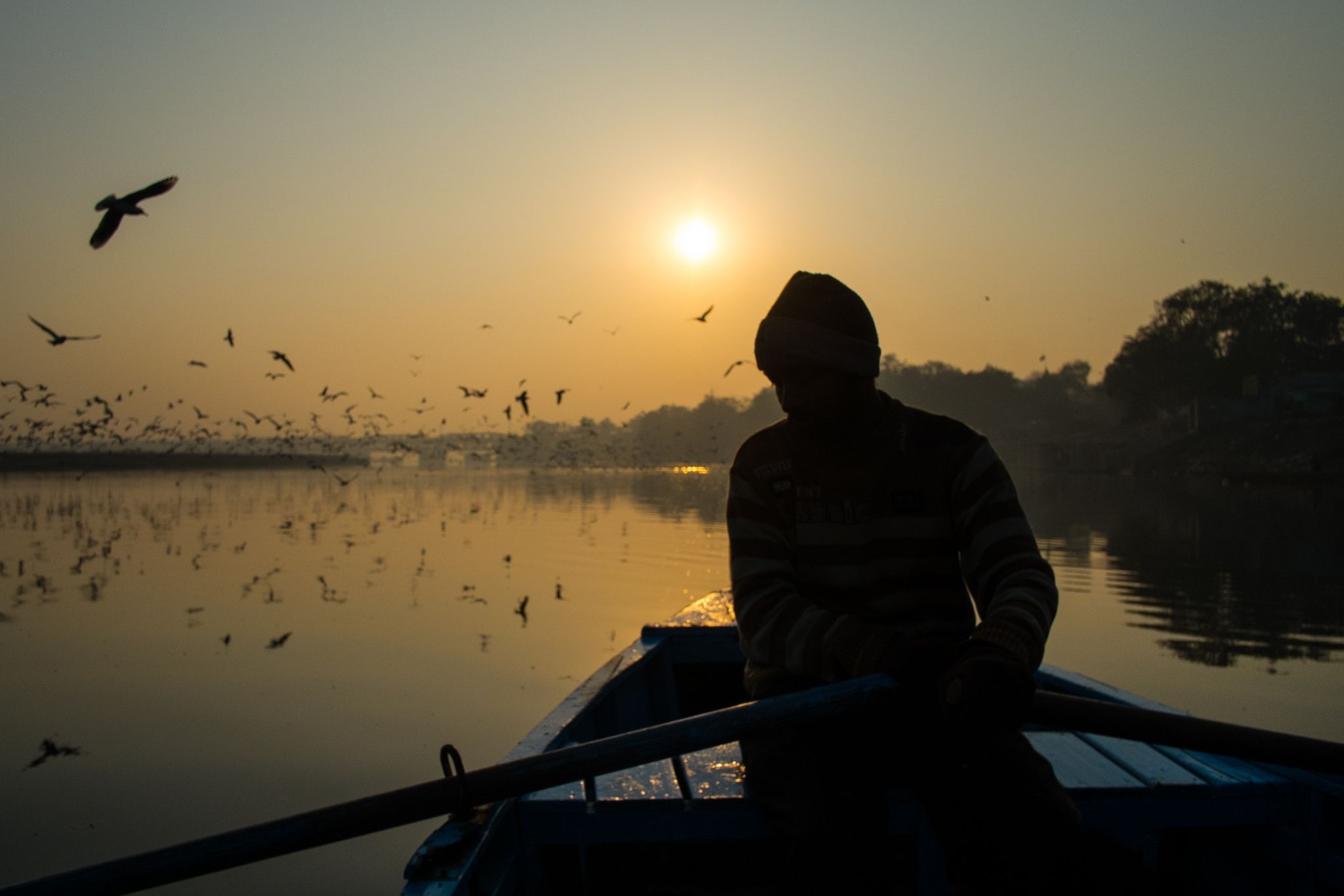
Here's some good news for the people of Delhi. If the Centre is to be believed, Delhi is going the Kochi way and Yamuna waters will keep the traffic burden off the road much like Kochi’s backwaters and rivers. A water taxi from Wazirabad in Delhi to Palla in Haryana is soon going to be operational. Tourists and the general public would be ferried in a traffic-free way between the two points which are 20 kilometres apart. Commuters would travel in just 45 minutes bringing down the time from the present 3.5 hours.
It’s a good concept but here’s a hitch. Kochi has been able to maintain its striking palm-lined network of rivers, lagoons and canals that run inland while the Yamuna in Delhi either runs dry at most stretches or is laden with sewage.
Yamuna lacks depth
The Yamuna has not been like this before. Boats and ferries were an appealing way to get around and have been in operation for ages. Early 19th century witnessed the arrival of steam navigation on rivers like Ganga and Yamuna. These rivers have been used widely for navigation particularly in eastern Uttar Pradesh, Bihar and Bengal.
However, maintaining the depth of the river has been a concern as the rivers had alluvium that made the waterways shallow. Preserving navigability year round was difficult, as rivers became risky during monsoons and shallow during summers. Further, they also changed course affecting navigability.
Different kinds of cargo boats were used in the region. After the Britishers arrived and the Western Yamuna, Eastern Yamuna and Agra canals constructed, private boats and barges moved on these canals. “In the latter half of the 19th century when the railways came into existence, the significance of waterways as inland trade routes declined, as the railways were faster and safer,” says Vikrant Tongad, a Greater Noida-based environmentalist and activist.
By the end of the 19th century, however, due to the lack of water in the natural network of channels in the country, this system could not be sustained. The Agra canal constructed in 1874 was closed for navigation in 1904.
The larger waterway project
Five waterways have been operating in India for long with the national waterway (NW-1) on Ganga being confirmed in 1982. Of the various modes of transportation, inland water transport share was negligible at 0.5 percent, especially when compared to other countries like Bangladesh, Germany, China, USA and Europe with their share of 35, 20, 8.7, 8.3 and 7 percent respectively. In 2016, the Government of India pushed inland navigation and enacted the National Waterways Act, 2016.
For the newly declared 106 national waterways, techno-economic feasibility studies were initiated by the Inland Waterways Authority of India (IWAI) under the Union Ministry of Shipping. The argument is that waterways are a cheaper option. The cost of transporting a tonne of freight over a kilometre by waterways is Rs 1.19 compared with Rs 2.28 and Rs 1.41 by road and rail, respectively.
The government has recently announced an investment of over Rs 10,000 crore for the development of inland waterways in the next three to five years with aid from the World Bank. This is significant considering that from 1986 till 2015, only Rs 1,500 crore was spent on developing inland waterways in India.
Yamuna waterway takes shape

As a part of the larger project, a feasibility study was done in 2016 to identify a suitable stretch of the Yamuna river between Delhi and Agra for navigation and development of water transport facilities. As per the Centre, the Palla-Wazirabad stretch was found to be less polluted and has the required depth for navigation. This is corroborated by the Central Pollution Control Board’s (CPCB) data which says the water meets C-class quality criterion which makes it suitable for drinking purposes after conventional treatment followed by disinfection.
“The stretch downstream of the Wazirabad barrage till Agra is highly polluted and was left out of the project as loads of effluents and sewage fall into the river which turns black and has a heavy stench,” says Tongad.
A pre-feasibility study by the Ministry of Shipping had indicated that the section between Palla and Wazirabad is navigable and can be used for limited transport of passenger and goods besides recreation. The stretch below, from Wazirabad to Okhla is not suitable for navigation. Recreation facilities such as boating and other water sports were ruled out by the study as both the water quality and quantity in the Yamuna need to improve. The proposal involves development of five floating terminals or jetty-like structures that would be anchored by cables. The project will cost around Rs 28 crore.
Experts disagree on the stretch
For a waterway scheme to work, there should be water. “The water that they are trying to utilise is not the original river flow of the Yamuna's but a portion of the drinking water supply for Delhi which is let into the river through drain No 8 of Western Yamuna canal at Palla village. The river is dry otherwise. The river channel carries the water to the Wazirabad barrage to be lifted for drinking water use in parts of Delhi. Should this water be thrown open to pollution from the water taxi project?” says Manoj Misra, forestry and wildlife expert, and the head of Yamuna Jiye Abhiyaan.
“The condition of Yamuna river is quite bad in Delhi and several other places. The waterways project is likely to aggravate this due to dredging and other interventions,” says Shripad Dharmadhikary, the founder of Manthan Adhyayan Kendra, a centre that monitors, analyses and researches water-related issues.
Given the seasonality of flows in the river, which has been dammed at Hathnikund and its waters diverted, the project will need special efforts to ensure that the flow in the waterway is maintained. “Due to the growing demand and competition among riparian states, the Yamuna river stretch upstream of Delhi is under severe stress. This year, even plying of small boats have come to a halt. So water taxi project is unfeasible,” says Bhim Rawat of South Asia Network on Dams, Rivers & People (SANDRP), New Delhi.
“Also where are the users of such a project? The entire stretch is largely rural and there is not much traffic even on the roads alongside the river there. So who is draining his/her monies into an unviable enterprise and why? I think that in the long run, it is nothing but an attempt to encroach and fast forward urbanisation of the last remaining unmolested stretch of river Yamuna in Delhi,” says Misra.
DJB opposed to the project
Even the Delhi Jal Board (DJB) is opposed to the idea of a water taxi. Of the 900 million gallons of water distributed in Delhi per day, nearly 60 percent comes from Haryana through the Yamuna. The DJB, which is currently cleaning the river through the Yamuna Action Plan (YAP)-III, feels that the waterway project will affect the drinking water supply mainly due to pollution. They raised the issue with the Inland Waterways Authority of India.
“The only Yamuna water the DJB can use is the one upstream of Wazirabad barrage,” says Himanshu Thakkar, coordinator of SANDRP. As per the CPCB, the water quality downstream of the Wazirabad barrage does not comply with the standards.
Huge cost to the environment
In 2016, the IWAI had moved the National Green Tribunal (NGT) seeking clearance regarding the ecological and environmental aspects for plying the water taxi service in the Yamuna. The NGT issued notices to the Ministry of Water Resources, the environment ministry, the Delhi government, the Delhi Development Authority, the Delhi Pollution Control Committee, and others while seeking a reply.
“The NGT also referred the matter to a principal committee, which in its meeting in May 2017, clearly stated that the project proponent should relook at the project taking into account the environmental impacts, plus do a cost-benefit analysis with inclusion of environmental costs. This indicates that there are several significant environmental impacts even of the Palla-Wazirabad section. They are supposed to go back to the committee with the findings. So, this means that the project has not got the go-ahead from the NGT. One hopes that they will not start the work before that,” says Dharmadhikary.
“The NGT had, while discussing Maily se Nirmal Yamuna Revitalisation Project, 2017, prohibited carrying out construction activity in the demarcated floodplain of Yamuna. Not just the floodplain, the river ecology needs to be protected, its environmental flow maintained and chemical-free agriculture needs to be promoted in the floodplain to reduce river pollution. It’s hard to understand how water taxis are a priority when more serious issues have not been dealt with,” says Tongad.
“There are significant environmental impacts on the Palla-Wazirabad as well as the downstream stretch. Considering the state of the river now, an inland waterway on both seem not feasible. We need to first achieve river rejuvenation which can be followed by navigation, after a thorough environment impact assessment. Now we are even jeopardising the possibility of river rejuvenation by first trying to push navigation,” says Thakkar.
Inland waterway 110: IWAI’s negligence
Following the NGT’s snub, the IWAI appointed an agency to carry out the environment impact assessment, social impact assessment study and cost-benefit analysis of the project in the Yamuna. “The IWAI says that they are doing these studies. But the problem is that these are being done outside the framework of the formal, legally mandatory environmental clearance (EC) process governed by the EIA notification 2006. This means that there will be no scrutiny of the Expert Appraisal Committee, no formal public hearing, and no EC that will have legally binding conditions and which requires mandatory monitoring. Thus, the environmental studies being done now will not be credible as the agency getting it done is the project promoter, so there is a conflict of interest. There will be no legal binding on any of its proposed environmental mitigation measures,” says Dharmadhikary.
“I do not think that our rivers with their monsoonal characteristic of high to very high flow in monsoon tapering down dramatically in non-monsoon months are in any manner meant for the western style high duty commercial transportation. While river as a means of local level transportation is age-old and has been practised for long, what is being planned is the import of alien ideas and practices that shall play havoc with our rivers and its biodiversity,” says Misra.
“Where is the water in the Yamuna after a series of dams and barrages and where is the market? Even the economics do not support it as the total length of transport via the river is way higher than the length via highways. If not aborted soon, the nation shall be left with nothing more than huge spent and unviable and non-functional assets scattered all along the devastated river system,” says Misra.
“Not just the environmental perspective and the limiting navigation conditions of the Yamuna, the project looks doomed because of an unrealistic assessment of market conditions,” says Tongad.
“Besides market assessment, even more important is the need to do the environment impact assessment of the whole project to be followed by public consultations and independent appraisal,” says Thakkar.
Looks like the odds are heavily stacked against a water taxi project on the Yamuna. The bigger question is, does Delhi really need it?
/articles/will-boats-float-yamuna